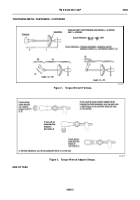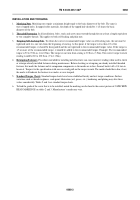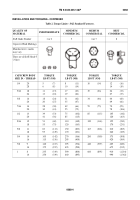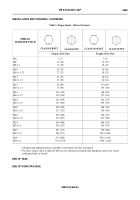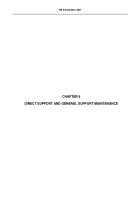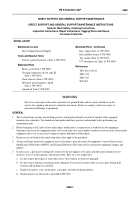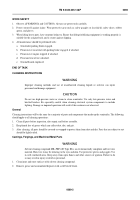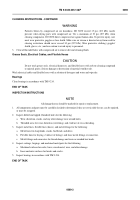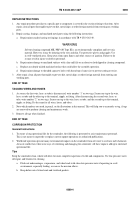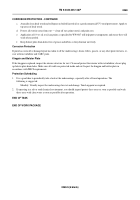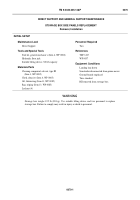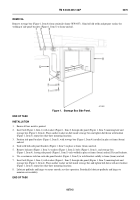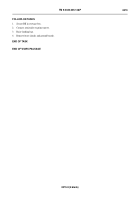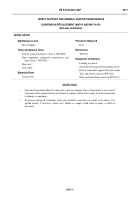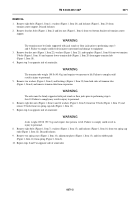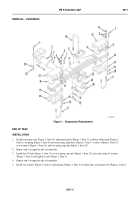TM-9-2330-335-14-P - Page 326 of 640
0069-4
TM 9-2330-335-14&P
0069
REPAIR INSTRUCTIONS
00069
1.
Any repair procedure peculiar to a specific part or component is covered in the section relating to that item. After
repair, clean all parts thoroughly to prevent dirt, metal chips, or other foreign material from entering any working
parts.
2.
Repair casting, forgings, and machined metal parts using the following instructions:
a.
Repair minor cracked casting or forgings in accordance with TB 9-2510-242-40.
WARNING
Solvent cleaning compound MIL-PRF-680 Type III is an environmentally compliant and low toxic
material. However, it may be irritating to the eyes and skin. Use protective gloves and goggles. Use
in well-ventilated areas. Keep away from open flames and other sources of ignition. Failure to do
so may result in injury or death to personnel.
b.
Repair minor damage to machined surfaces with a fine mill file or an abrasive cloth dipped in cleaning compound.
c.
Replace any deeply nicked machined surface that could affect the assembly operation.
d.
Repair minor damage to threaded capscrew holes with thread tap of same size to prevent cutting oversize.
3.
After repair, clean all parts thoroughly to prevent dirt, metal chips, or other foreign material from entering any
working parts.
END OF TASK
TAGGING WIRES AND HOSES
00069
1.
As soon as the first wire, hose, or tube is disconnected, write number “1” on two tags. Secure one tag to the wire,
hose, or tube and the other tag to the terminal, nipple, or fitting. After disconnecting the second wire, hose, or
tube, write number “2” on two tags. Secure one tag to the wire, hose, or tube, and the second tag to the terminal,
nipple, or fitting. Do the same for all wires, hoses, and tubes.
2.
Note which numbers you used, in pencil, on the illustrations in this manual. This will help you to accurately re-tag, if tags
are removed to perform cleaning and maintenance work.
3.
Remove all tags when finished.
END OF TASK
CORROSION PROTECTION
00069
General Instructions
00069
1.
To ensure a long operational life for the semitrailer, the following is presented to assist maintenance personnel.
This is not meant to supersede or replace current support operations or authorized publications.
2.
Worldwide operations present many environmental impacts on the semitrailer from salt water to ice/snow melt chemicals.
Areas of conflict have their own ways of ventilating and damaging the semitrailer. All these impacts add up to shortened
operational life.
Tips
00069
Keep the semitrailer clean, which will allow for more complete inspection of welds and components. Use low-pressure water,
detergent, and brushes for cleaning.
a.
Flush out undercarriages, suspensions, and wheel ends with clean low-pressure water if operating in a salt
environment, especially fording, as soon as the mission allows.
b.
Keep debris out of wheel ends and twistlock pockets.
Back to Top

